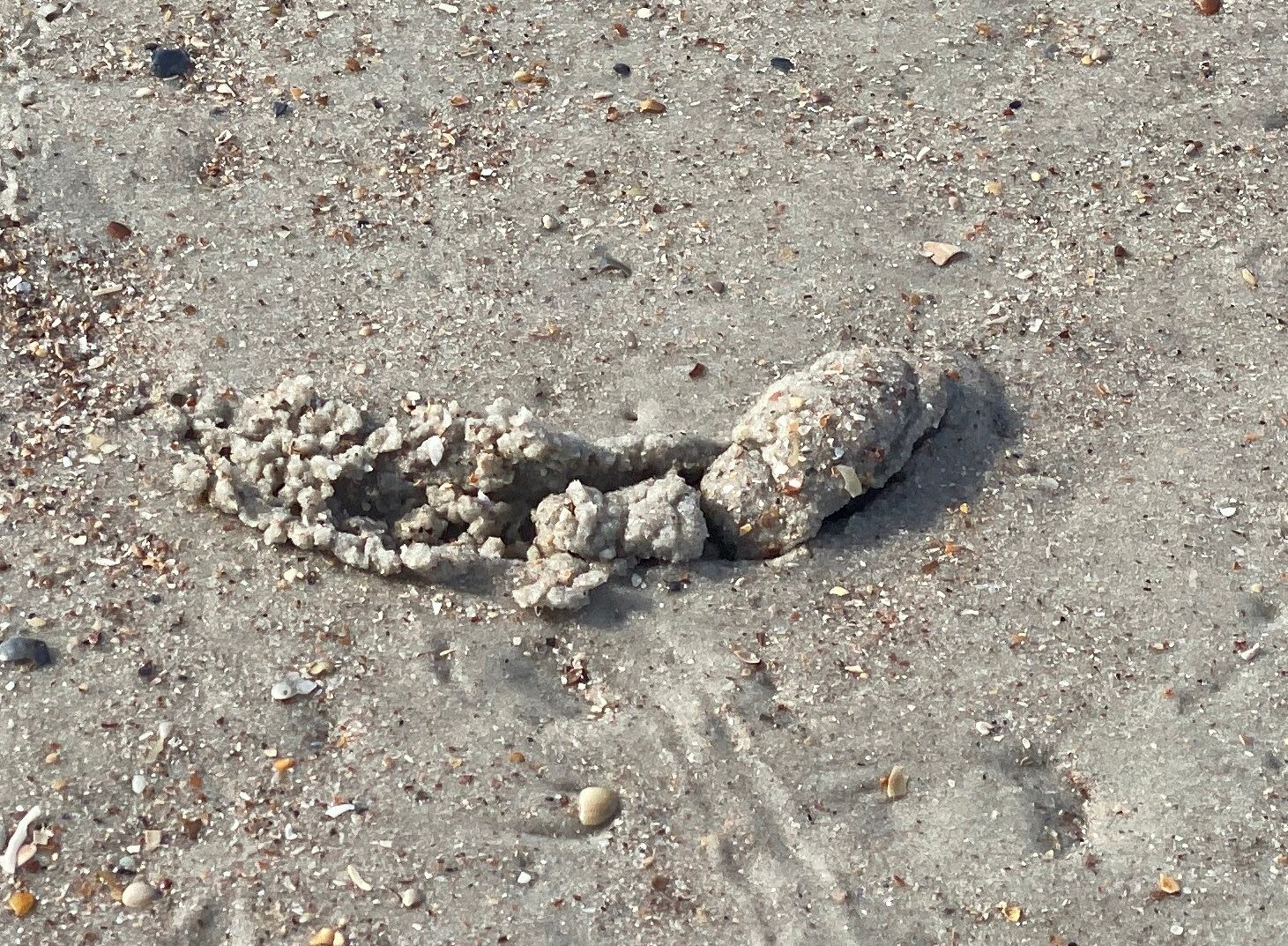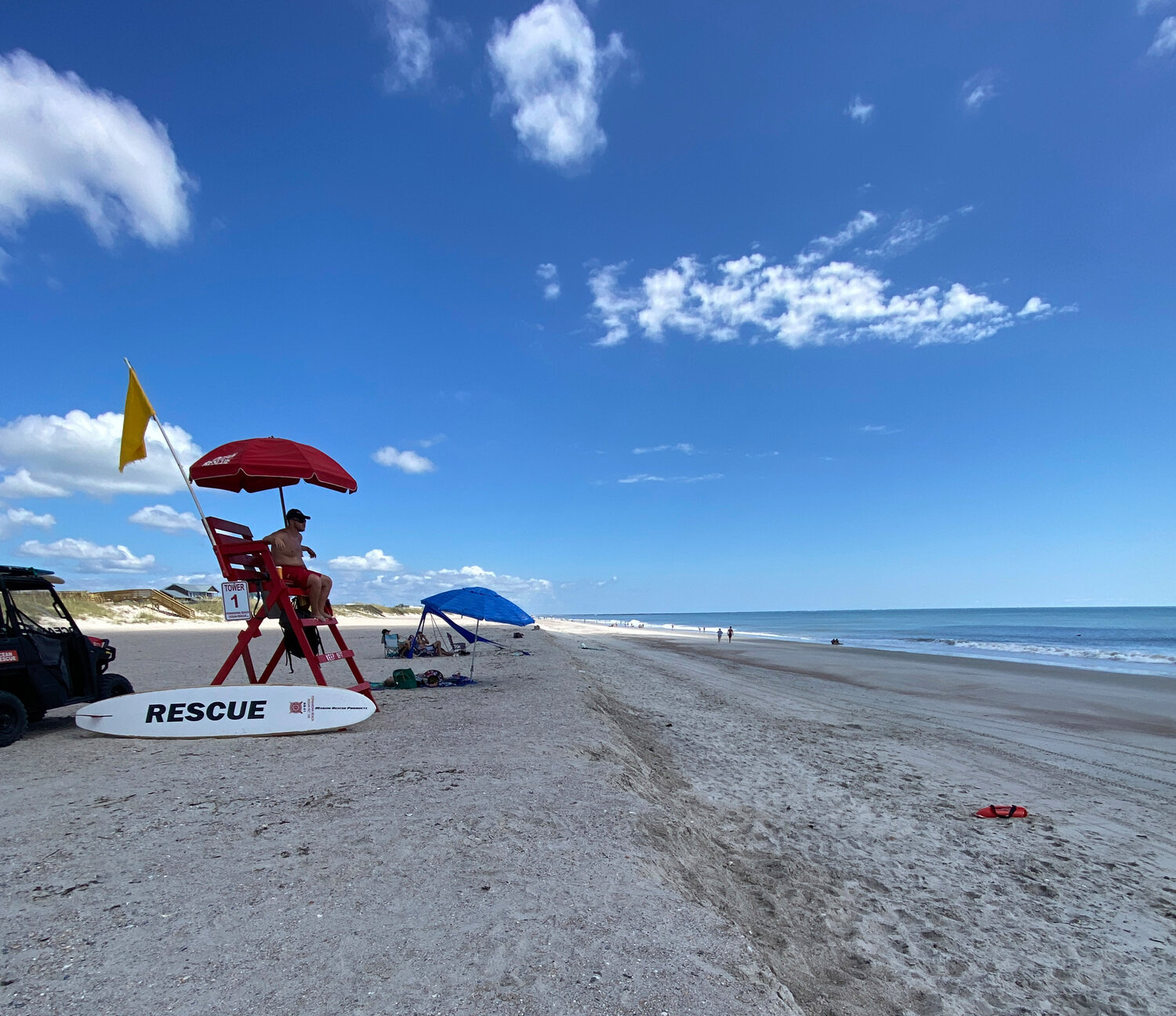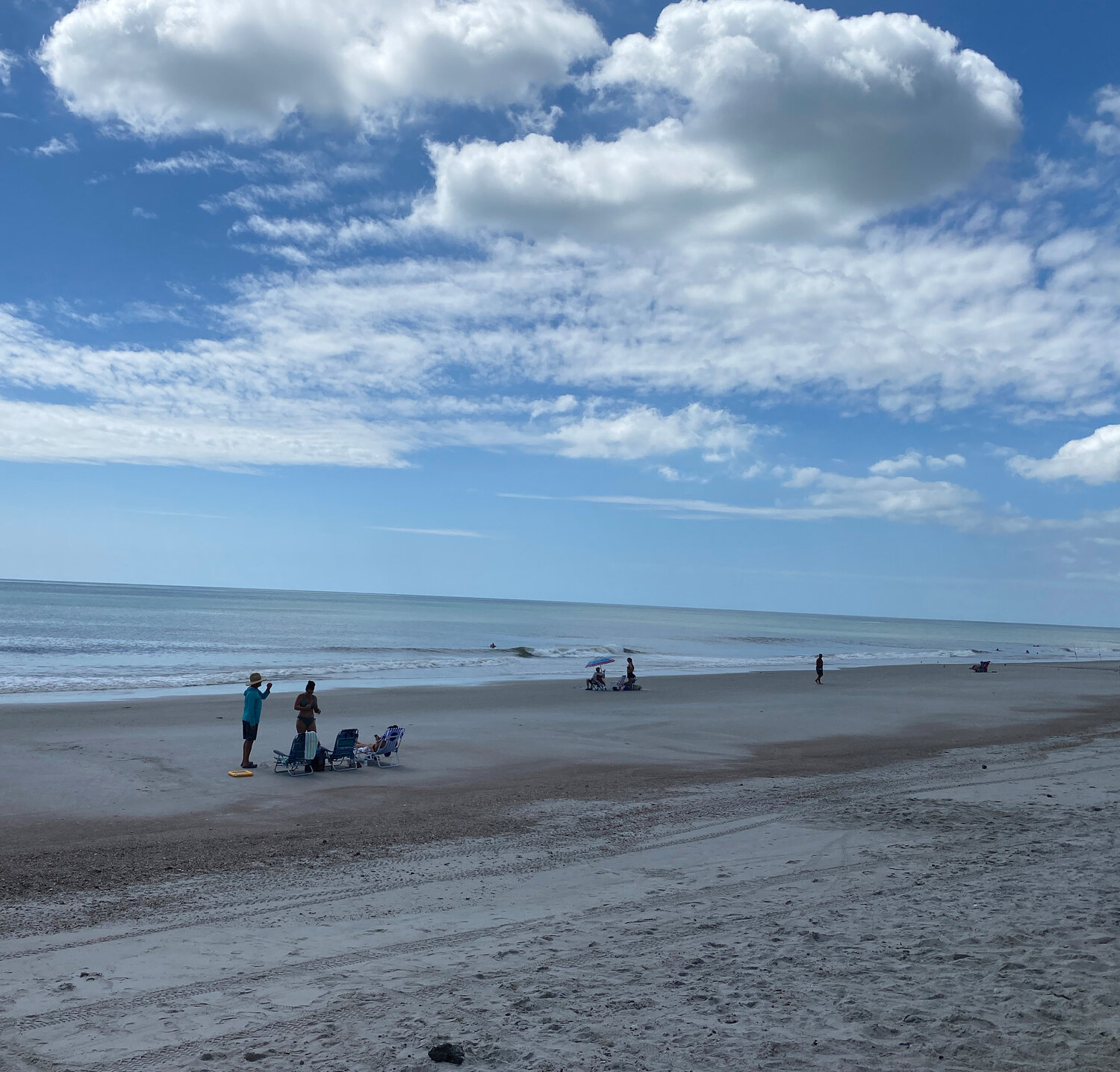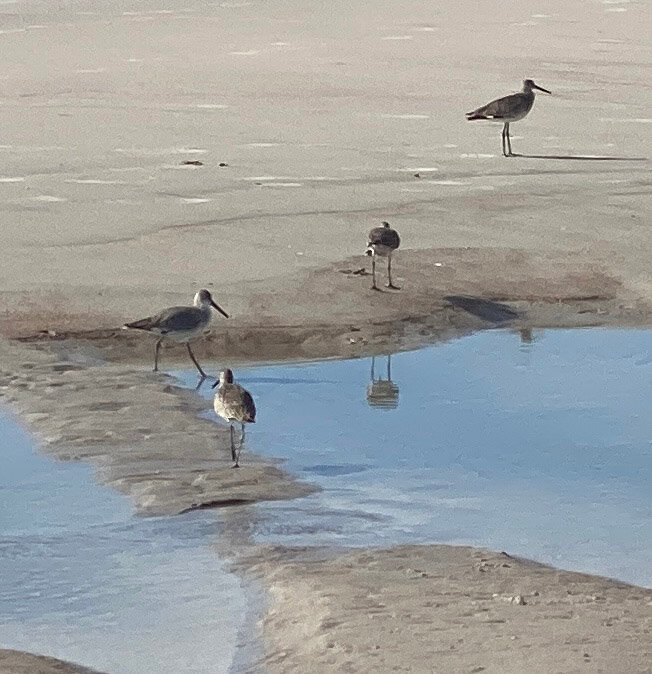Mole crabs/Sand fleas
I’m by no means a fisherperson. The few times Bucko tried to entice me into surf fishing I soon walked away and started looking for fossilized shark teeth and talking to strangers. That’s probably why I didn’t really learn about mole crabs (sand fleas) until recently. Any avid Florida surf fisherman, it seems, knows about these beach burrowers that make great bait for nearly every fish possible to catch from shore. And best yet, they are free for the finders.
I got interested in mole crabs a few weeks ago when I found one on the beach from the Simmons Road access, and then, looking at holes in the sand, I found many more, accessible with a bit of digging before they scuttled too far down for me to reach. A few days later, walking from the Scott Road access, I found many more holes and mole crabs within them. I thought I was being helpful so I carried one over to an intent fisherman set up on the surf’s edge with his buckets and rods and tried to give it to him. But no, this fisherman was from the Midwest and had no idea about mole crabs. He was fishing with cut bait and that was fine for him. But when I checked in on the walk back down the beach, he still hadn’t caught anything. But he still shunned sand fleas, oh well.
Mole crabs are crustaceans -- decapods actually -- and are related to many crab species we are more familiar with. Although they may be edible, there is so little meat that it is hardly worthwhile to harvest them for food. But yes they are often harvested for bait in Florida, even commercially. Once most Florida beaches were loaded with this free bait, but that seems to be a thing of the past. The Florida Sportsman magazine reports a steep decline in their abundance in recent years, and the commercial bait catches recorded by the Florida Fish and Wildlife Conservation Commission reported that 32,651 pounds of sand fleas were collected in 2020, but only 7,652 pounds were harvested just two years later. And the Florida Sportsman organization reports that sport fishermen are now finding it difficult to find their own mole crab bait on the beaches they frequent.
Two main factors are thought to be behind this decline: beach erosion from storms and beach renourishment projects happening, according to Florida Sportsman, on 60% of Florida’s critically eroded beaches. Well, in Fernandina I thought I’d do my own mini-experiment to see what is happening here. All of our beaches presumably face the same amount of storm damage, but not all were renourished. So I visited beaches that were not renourished (Simmons and Scott Road beach accesses) and one that was (the north access to Fernandina’s city beaches). And it was a shocking comparison.
The beaches south of the renourishment area have long sloping low tide areas with lots of sand flea holes and the critters themselves roaming around. And the beach at the north access had none. Moreover, the north end beach was an entirely different landscape at low tide. There was an abrupt drop in elevation from the higher sand to the shoreline at low tide, a steep incline that I needed the help of the lifeguards to climb back up from the shoreline. I’m no beach expert, but it looked to me like the nourishment sand had washed away and, along with it, the sand fleas.
Well, so what about the sand fleas you might ask? Who cares? Well, these innocuous little critters are a sign of good health on a beach, and the renourished area is not healthy. All the other organisms that share their subtidal sand areas with sand fleas have no doubt disappeared here too, and this ecosystem is in distress. On the low tide beaches south of the renourished sites willets were parading in front of me, poking their long beaks into the sand flea holes. On the renourished beach all that was around were people and gulls feeding on discarded human food.
This is just another example of our environment going haywire around us, with little notice. I am glad I am old and the world will not totally disintegrate in my lifetime, but for those grandchildren out there, I wish them well.
Pat Foster-Turley, Ph.D., is a zoologist on Amelia Island. She welcomes your nature questions and observations. [email protected]













